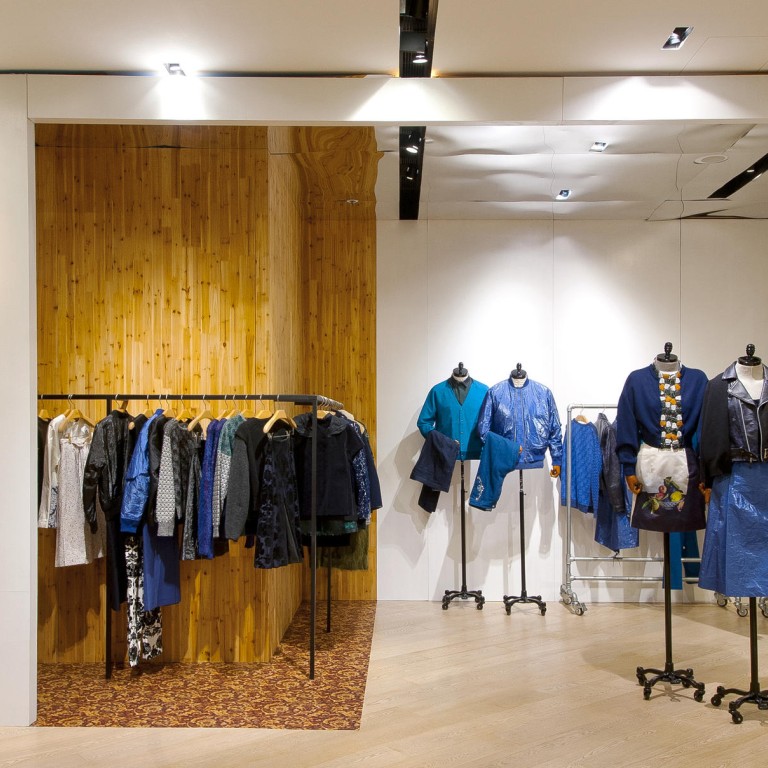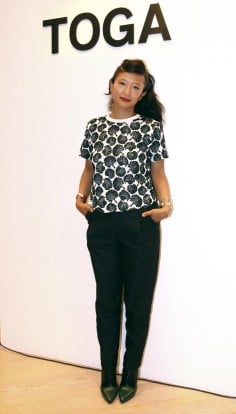
Japanese designer Yasuko Furuta of Toga mixes it up with vintage
For many years, Japanese high fashion has been associated with the dark, conceptual designs of Rei Kawakubo and Yohji Yamamoto. However, this is set to change thanks to designers such as Yasuko Furuta, the woman behind hip label Toga.
Her brand is helping redefine Japanese fashion for a whole new generation thanks to her urban, multilayered silhouettes and couture fabrics.
I hate fast fashion. I like clothes that are treasured and kept forever
"I am not avant-garde - my clothes are about being comfortable. Many traditional Japanese designers choose not to expose a woman's sexuality, but I want to inject sexiness into my clothes. I want to embrace femininity and play with it," she says.
Furuta was recently in Hong Kong to unveil her latest autumn-winter collection and launch a Toga pop-up store at Joyce in Pacific Place. The space, which is open until September 30, also houses a selection of vintage clothes. Hand-picked by the designer, they include two-tone faux fur jackets, glittery sweaters and 1950s-style knits.

"Normally, I don't wear one look or brand. I like to mix Toga with vintage items and create my own style.
"I opened the store because I wanted to show our customers how they could mix vintage pieces with our clothes and use fashion as a form of personal expression and freedom."
The idea of freedom was what initially led Furuta to study fashion in Paris. As one of the few Japanese students at the famous Esmod school, she learned to draw upon her identity to create clothes that stood out from her French counterparts.
In 1994, she returned to Japan where she began a successful career styling celebrities and actresses on television. In 1997, she took a leap and launched her own label so she could create clothes for everyone, not just a few select clients.
"Our customer is very curious and always wants to try new things. Vintage clothes were a real source of inspiration for me as everything is unique but you can wear the clothes in a new way. I hate fast fashion. I like clothes that are treasured and kept forever," says Furuta, who cites Vivienne Westwood as a major inspiration.
She settled on the name Toga, a reference to the cloth worn by the Ancient Romans, to express her desire to create a new way for women to dress.
Soon, her mix of deconstructed vintage clothes, Japanese street fashion and couture attracted fans both at home and in cities such as Paris, where she started showing at Fashion Week in 2005.
In 2009, she was awarded the Mainichi Fashion Grand Prix in Japan.
As her style developed, so did her collection. She launched several sub-lines, including Toga Pulla with its everyday basics, Toga Virilis for men, and Toga Picta which features one-of-a-kind, reconstructed vintage garments. All of them embody the Toga trademark: elegant and tough, with a modern silhouette and unique textiles.
"Fabric is the most important element for me," she says. "I source textiles [from] around the world. I have been working with the same partner for 10 years who has been developing and making our original fabrics."
This is on full display in her latest collection, Modern Impressionism, which draws inspiration from the art movement and masters such as Renoir, Monet, Cézanne and Van Gogh.
It features masculine-style trousers with drapes, corsets and a high waist. Silk is embroidered with intricate patterns that reference vintage wallpapers. These are brought to life in colours such as purple, green and blue. Impressionist still-life paintings are also printed on skirts and dresses.
She is adding to her repertoire by collaborating with a Japanese streetwear label. A line of handbags and homewares are also on her wish list and are part of a bigger plan to build a lifestyle label. Her first passion, however, will always be women's wear.
"Women love fashion and the freedom it gives them. That makes designing for them all the more interesting," she says.

